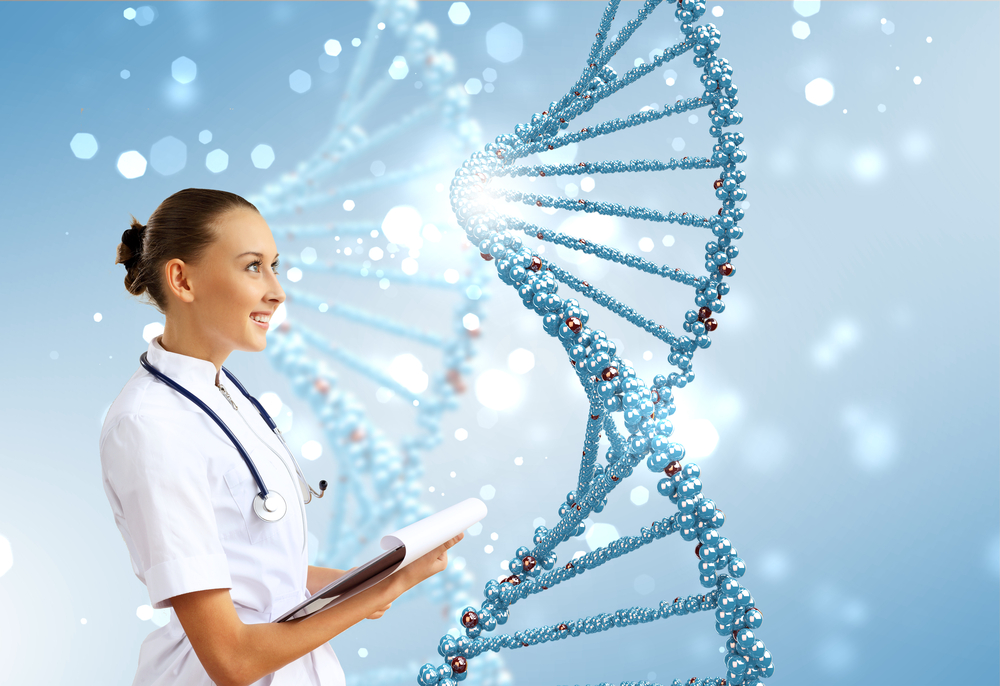Symptom Severity Correlates with Distinct SCN1A Gene Mutation, Study Suggests

Distinct mutations in the SCN1A gene are associated with different degrees of impairment in specific brain nerve cells as well as symptom severity in people with Dravet syndrome, according to a recent study.
The research, “Differential effects on sodium current impairments by distinct SCN1A mutations in GABAergic neurons derived from Dravet syndrome patients,” was published in the journal Brain & Development.
More than 70% of Dravet patients have mutations in one copy (heterozygous) of the SCN1A gene, leading to impaired voltage-gated sodium channels in brain nerve cells (neurons) and ultimately disrupting the transmission of electrical signals in the brain.
Neurons communicate as a consequence of a fine balance between excitatory and inhibitory neural signals. Excitatory signaling from one nerve cell to the next makes the latter cell more likely to fire an electrical signal. Inhibitory signaling makes the latter cell less likely to fire.
Although in previous studies brain hyper-excitability appeared to be related to a malfunction of inhibitory neurons in mice carrying SCN1A mutations, different model systems have provided conflicting evidence regarding these mutations and altered neuronal communication in Dravet.
Several studies using induced pluripotent stem cells (iPSCs) have provided evidence of hyper-excitability associated with SCN1A mutations in patient-specific neurons. iPSCs are cells derived from either skin or blood that have been reprogrammed back into a stem cell-like state, which allows for the development of an unlimited source of almost any type of human cell.
However, other studies have shown that mutations in SCN1A caused functional decline in GABAergic neurons, which could help explain epileptic seizures in Dravet. GABA is the brain’s main inhibitory neurotransmitter, preventing excessive neuronal activity.
“Such inconsistent results may result from the different mutations in SCN1A and neuronal subtypes examined in each study,” researchers said.
Aiming to address this, Korean researchers collected skin biopsies from two female Dravet patients carrying either a missense (c.4261G > T, patient DS-1) or a nonsense mutation (c.3576_3580 del TCAAA, patient DS-2) in SCN1A to generate iPSCs.
While missense mutations are single changes in nucleotides — the building blocks of DNA or RNA — resulting in a different amino acid (the building blocks of proteins) in the final protein, nonsense mutations consist in the introduction of a stop signal that halts protein production and leads to a shorter and nonfunctional version.
These cells were then differentiated (transformed) into GABAergic neurons of the forebrain, a primarily afflicted cell type in Dravet syndrome. The team specifically compared the impact of the two specific mutations on neurons’ electrical properties, as well as on Dravet’s clinical severity.
Both patients had a normal birth history. Patient DS-1 had the first seizure with prolonged febrile status epilepticus — long and/or consecutive seizures without in-between recovery — at eight months, which became increasingly frequent and associated with regressed development. The seizures did not respond to anticonvulsants or to a ketogenic diet — a high-fat, low-carbohydrate, limited-protein diet.
Patient DS-2 had the first seizures at four months, though her frequency of febrile and afebrile seizures was inferior to that of DS-1. Also, DS-2 responded to treatment with anticonvulsants Depacon (sodium valproate), Onfi (clobazam) and Diacomit (stiripentol), as seizure frequency decreased to one or two episodes per month. The patient maintained her developmental score of mild to moderate intellectual disability until she was 5.
The greater severity of symptoms observed in patient DS-1 was contrary to researchers’ expectations based on type of mutation.
The specific profiles of iPSCs generated from the two patients did not differ from human control cell lines, suggesting that mutations in SCN1A likely do not affect the differentiation of stem cells into forebrain GABAergic neurons, the authors noted.
Recordings of electrical activity showed significantly lower sodium current density and decreased nerve impulse frequency (action potential) at strong currents in patient-derived GABAergic neurons, compared to control cells. This suggests that the impaired ability to fire action potentials is a common property of GABAergic neurons with SCN1A mutations.
“More importantly, the greater functional impairment of DS-1 neurons compared to DS-2 neurons appeared well-matched with the symptomatic severity of each donor,” researchers said.
Overall, these findings using patients’ iPSCs reproduced the known neuronal transmission deficits of GABAergic neurons from Dravet patients. Also, researchers believe these results indicate that distinct SCN1A mutations differentially affect such impairments and may be associated with the corresponding clinical severity observed in the donors.
“Our results, consistent with previous reports, support the idea that SCN1A mutation results in dysfunction of GABAergic neurons and decreased inhibition in neural circuits, which may be the pathophysiological [functional change resulting from disease] basis of epileptic seizure in [Dravet syndrome],” researchers said.
However, a “more comprehensive, genotype-to-phenotype model is required to make accurate predictions about the clinical progress of these individuals,” they concluded.






